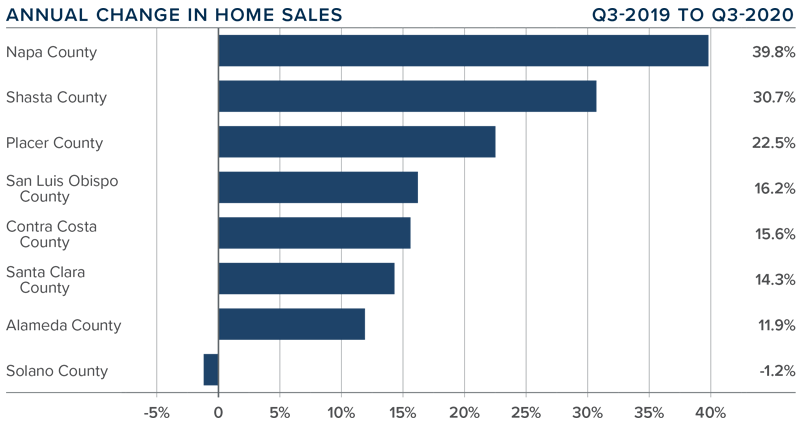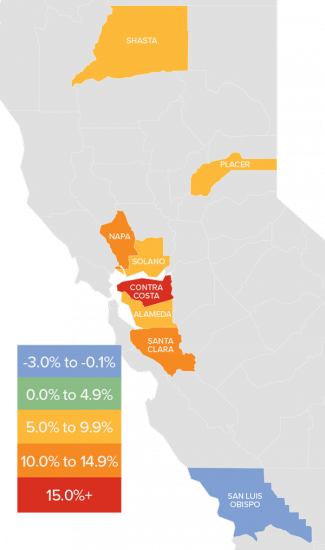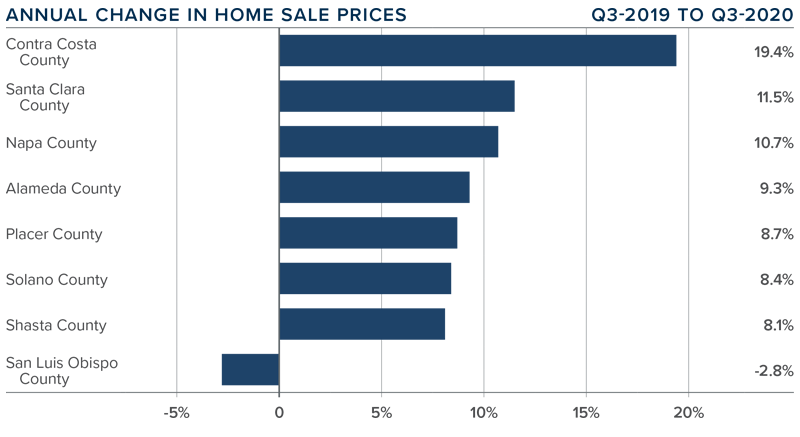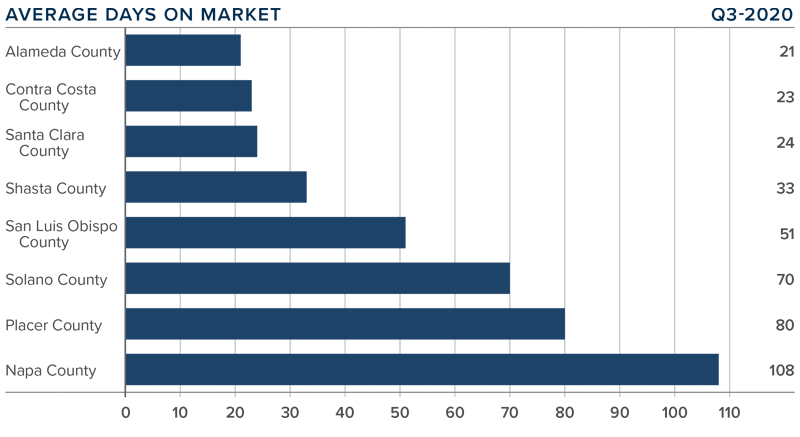The following analysis of the Northern California real estate market is provided by Windermere Real Estate Chief Economist Matthew Gardner. We hope that this information may assist you with making better-informed real estate decisions. For further information about the housing market in your area, please don’t hesitate to contact your Windermere agent.
ECONOMIC OVERVIEW
We are certainly seeing some “green shoots” in the regional economy, but employment levels across the Northern Californian counties contained in this report remain well below where they were before COVID-19 hit. The region shed more than 432,000 jobs between February and May, but it appears as if we have turned the corner: preliminary data for September shows the region has recovered over 162,000 of those lost jobs. Even though jobs are returning, close to a quarter of a million people are still looking for work. It is, therefore, unsurprising to see the unemployment rate remain elevated at 8.3%, up from 3% in February. By county, the lowest jobless rate was in Santa Clara County (7%) and highest in Solano County (9.7%). The economy is recovering, and it appears as if new COVID-19 cases in the state are leveling out. However, some counties in Northern California appear to be doing better than others. Additionally, the state’s wildfires—although mostly contained—are still likely to act as headwinds to a complete economic recovery.
HOME SALES
❱ In the third quarter of 2020, 14,800 homes sold, an increase of 14% compared to the third quarter of 2019. I was pleased to see a significant recovery from the second quarter of this year
as well, as sales rose a notable 62.2%.
❱ Year-over-year sales were positive in all counties other than Solano, although the drop there was very modest. The largest increase in sales was in Napa County, which was a little surprising given its exposure to the Hennessy Fire.
❱ Listing activity was down 32.1% compared to the third quarter of 2019, and came in 12.5% lower than in the second quarter of this year.
❱ It was also encouraging to see pending home sales in the quarter rising significantly (42.7%) compared to the second quarter, which tells me that closings in the final quarter of the year will be positive.

HOME PRICES
 ❱The average home price in the Northern Californian counties contained in this report rose 12.7% year-over-year to $1,029,000.
❱The average home price in the Northern Californian counties contained in this report rose 12.7% year-over-year to $1,029,000.
❱ The most affordable counties in terms of average sale prices were Placer and Solano. Price growth in these markets was very solid, but we also saw significant price increases in the more expensive counties.
❱ Average prices rose in all but one of the counties contained in this report. There was a small drop in San Luis Obispo County, reversing the impressive increase that this county saw last quarter.
❱ Home price growth is a function of supply and demand. Supply levels, which increased in the second quarter, have pulled back and it appears as if solid demand has pushed prices significantly higher.

DAYS ON MARKET
❱ The average time it took to sell a home in the Northern Californian counties covered by this report rose four days compared to the third quarter of 2019.
❱ The amount of time it took to sell a home dropped in six counties but rose in Napa (34 days) and Solano (25 days).
❱ In the third quarter, it took an average of 51 days to sell a home, with homes selling fastest in Alameda County and slowest in Napa County.
❱ The greatest drop in market time was in Contra Costa County, where it took seven fewer days to sell a home than in the third quarter of 2019.

CONCLUSIONS
 This speedometer reflects the state of the region’s real estate market using housing inventory, price gains, home sales, interest rates, and larger economic factors.
This speedometer reflects the state of the region’s real estate market using housing inventory, price gains, home sales, interest rates, and larger economic factors.
I was pleased to see jobs returning in reasonable numbers, and buyers—likely buoyed by very attractive mortgage rates—returning to the market. That said, listing activity was underwhelming, and this is likely part of the reason for the significant price growth.
If COVID-19 cases slow further and the forest fires are extinguished, I see no reason why the market cannot continue to improve. Because of these factors, I am moving the needle a little more in favor of home sellers.
ABOUT MATTHEW GARDNER
 As Chief Economist for Windermere Real Estate, Matthew Gardner is responsible for analyzing and interpreting economic data and its impact on the real estate market on both a local and national level. Matthew has over 30 years of professional experience both in the U.S. and U.K.
As Chief Economist for Windermere Real Estate, Matthew Gardner is responsible for analyzing and interpreting economic data and its impact on the real estate market on both a local and national level. Matthew has over 30 years of professional experience both in the U.S. and U.K.
In addition to his day-to-day responsibilities, Matthew sits on the Washington State Governors Council of Economic Advisors; chairs the Board of Trustees at the Washington Center for Real Estate Research at the University of Washington; and is an Advisory Board Member at the Runstad Center for Real Estate Studies at the University of Washington where he also lectures in real estate economics.
 Facebook
Facebook
 X
X
 Pinterest
Pinterest
 Copy Link
Copy Link



